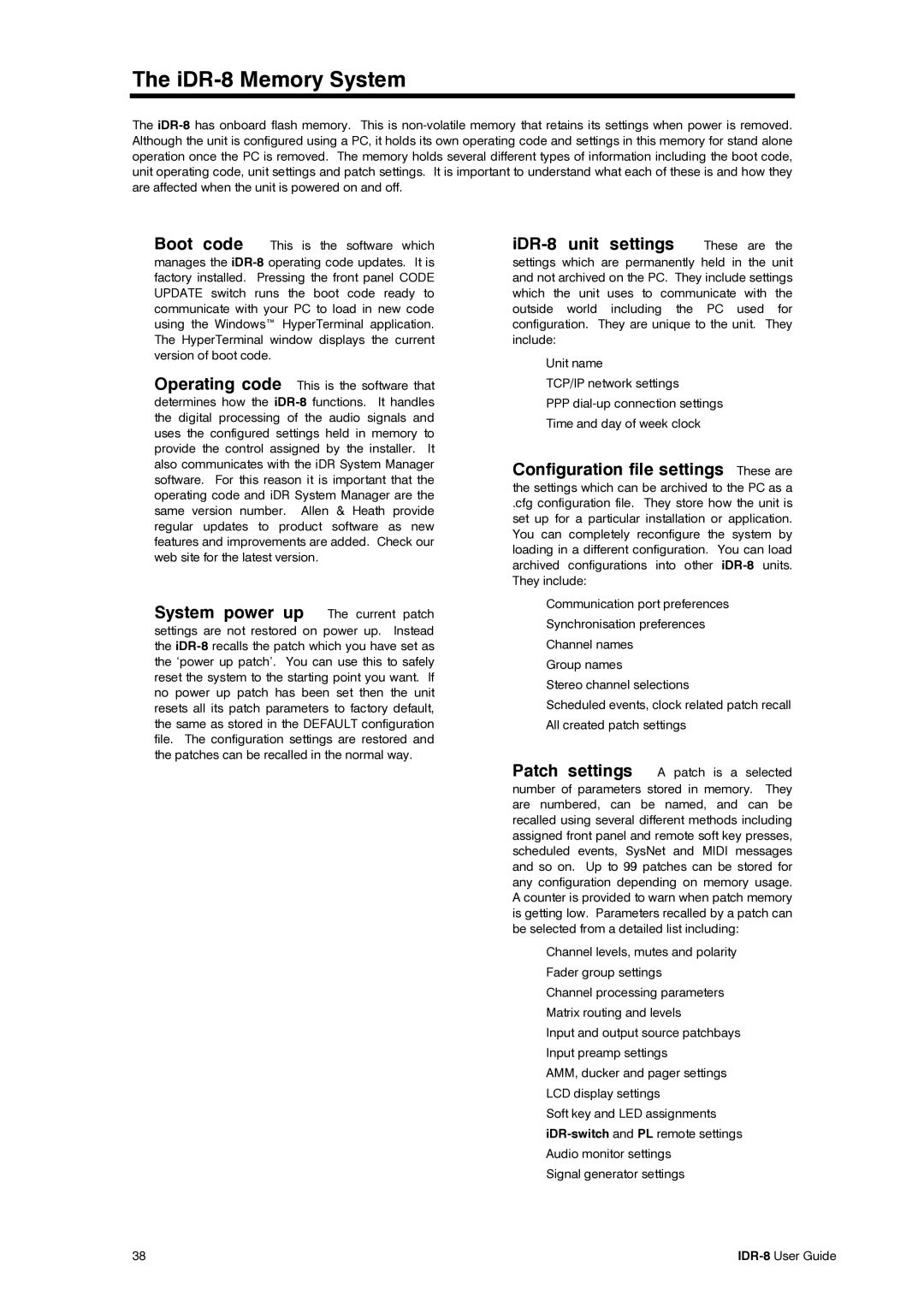The iDR-8 Memory System
The
Boot code This is the software which manages the
Operating code This is the software that determines how the
System power up The current patch settings are not restored on power up. Instead the
iDR-8 unit settings These are the
settings which are permanently held in the unit and not archived on the PC. They include settings which the unit uses to communicate with the outside world including the PC used for configuration. They are unique to the unit. They include:
Unit name
TCP/IP network settings
PPP
Configuration file settings These are
the settings which can be archived to the PC as a
.cfg configuration file. They store how the unit is set up for a particular installation or application. You can completely reconfigure the system by loading in a different configuration. You can load archived configurations into other
Communication port preferences Synchronisation preferences Channel names
Group names
Stereo channel selections
Scheduled events, clock related patch recall All created patch settings
Patch settings A patch is a selected number of parameters stored in memory. They are numbered, can be named, and can be recalled using several different methods including assigned front panel and remote soft key presses, scheduled events, SysNet and MIDI messages and so on. Up to 99 patches can be stored for any configuration depending on memory usage. A counter is provided to warn when patch memory is getting low. Parameters recalled by a patch can be selected from a detailed list including:
Channel levels, mutes and polarity Fader group settings
Channel processing parameters Matrix routing and levels
Input and output source patchbays Input preamp settings
AMM, ducker and pager settings LCD display settings
Soft key and LED assignments
Signal generator settings
38 |
